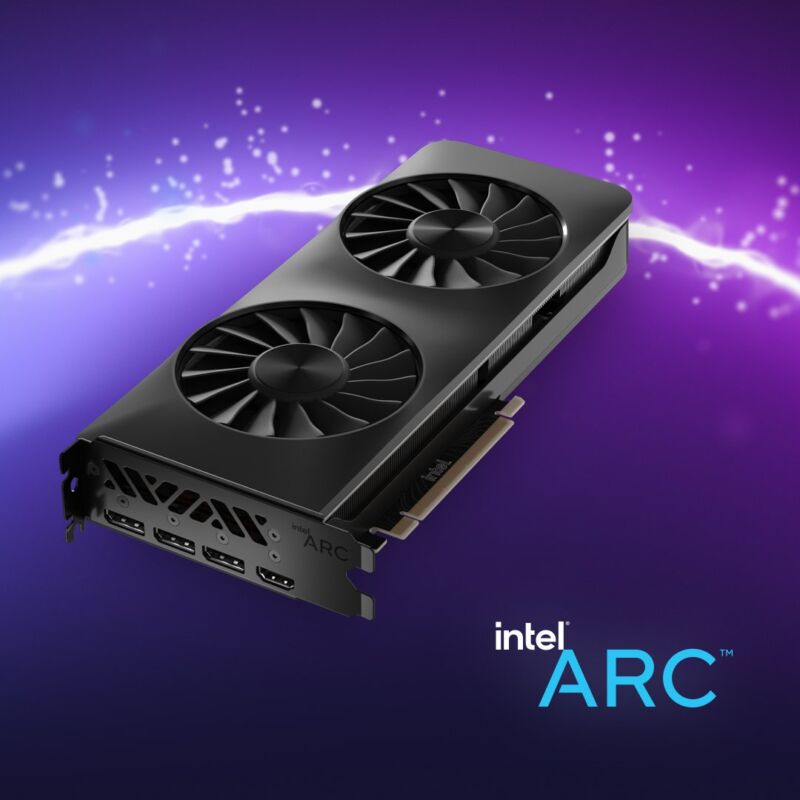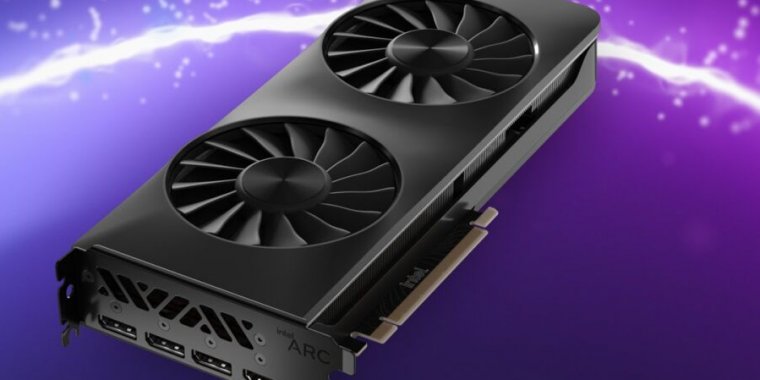
Almost a year ago, Intel made a big announcement about its push into the dedicated graphics business. Intel Arc would be the brand name for a new batch of gaming GPUs, pushing far beyond the company’s previous efforts and competing directly with Nvidia’s GeForce and AMD’s Radeon GPUs.
Arc is the culmination of years of work, going back to at least 2017, when Intel poached AMD GPU architect Raja Koduri to run its own graphics division. And while Intel would be trying to break into an established and fiercely competitive market, it would benefit from the experience and gigantic install base that the company had cultivated with its integrated GPUs.
Intel sought to prove its commitment to Arc by showing off a years-long road map, with four separate named GPU architectures already in the pipeline. Sure, the GPUs wouldn’t compete with top-tier GeForce and Radeon cards, but they would address the crucial mainstream GPU market, and high-end cards would follow once the brand was more established.
All of that makes Arc a lot more serious than Larrabee, Intel’s last effort to break into the dedicated graphics market. Larrabee was canceled late in its development because of delays and disappointing performance, and Arc GPUs are actual things that you can buy (if only in a limited way, for now). But the challenges of entering the GPU market haven’t changed since the late 2000s. Breaking into a mature market is difficult, and experience with integrated GPUs isn’t always applicable to dedicated GPUs with more complex hardware and their own pool of memory.
Regardless of the company’s plans for future architectures, Arc’s launch has been messy. And while the company is making some efforts to own those problems, a combination of performance issues, timing, and financial pressures could threaten Arc’s future.
early turbulence
A year after its announcement, it seems that Arc is already on shaky ground. Intel has proven characteristically incapable of meeting its initial launch estimates, just barely managing to pull off a paper launch of two low-end laptop GPUs in Q1 (the original launch window) and failing to follow up with widely available desktop cards in Q2. The company has been very public about its struggles with drivers, which are hurting the cards’ performance in older but still widely played games. And the graphics division is losing money at a time when revenue is tumbling across Intel.
And that’s just what is happening in public. A report from the German-language Igor’s Lab claims that Intel’s board partners (the ones who would be putting the Arc GPU dies on boards, packaging them, and shipping them out) and the OEMs who would be putting Arc GPUs into their prebuilt computers are getting frustrated with the delays and lack of communication.
A long, conspiratorial video from YouTuber Moore’s Law is Dead goes even farther, suggesting (using a combination of “internal sources” and speculation) that people in Intel’s graphics division are “lying” to consumers and others in the company about the state of the GPUs, that the first-generation Alchemist architecture has fundamental performance-limiting flaws, and that Intel is having internal discussions about discontinuing Arc GPUs after the second-generation “Battlemage” architecture.
We’ve contacted Intel and several GPU manufacturers to see if they had anything to share on the matter; the short version is no—Intel has no news on release dates. Asus says it”[doesn’t] currently have anything in the pipeline for Intel Arc on the North America side,” and other companies haven’t responded yet. For his part, Intel graphics VP Raja Koduri have said publicly that “we are very much committed to our roadmap” and that there will be “more updates from us this quarter” and “four new product lines by the end of the year.”
